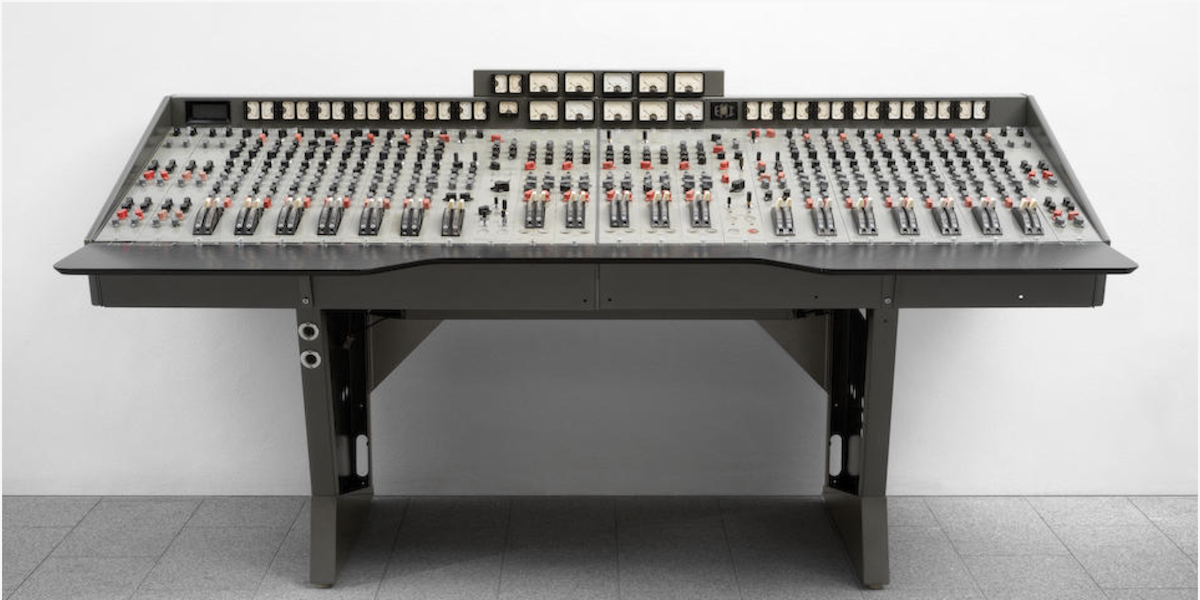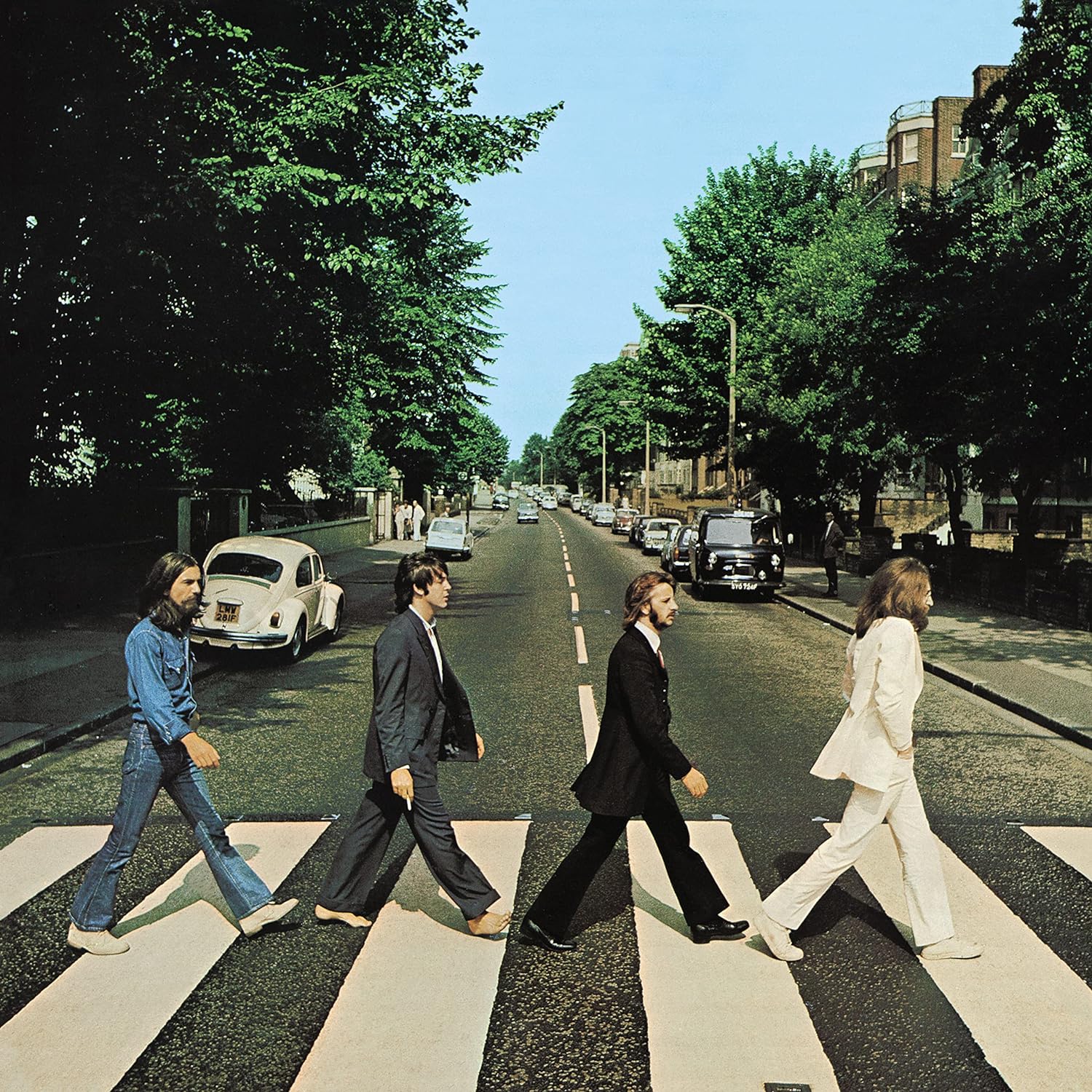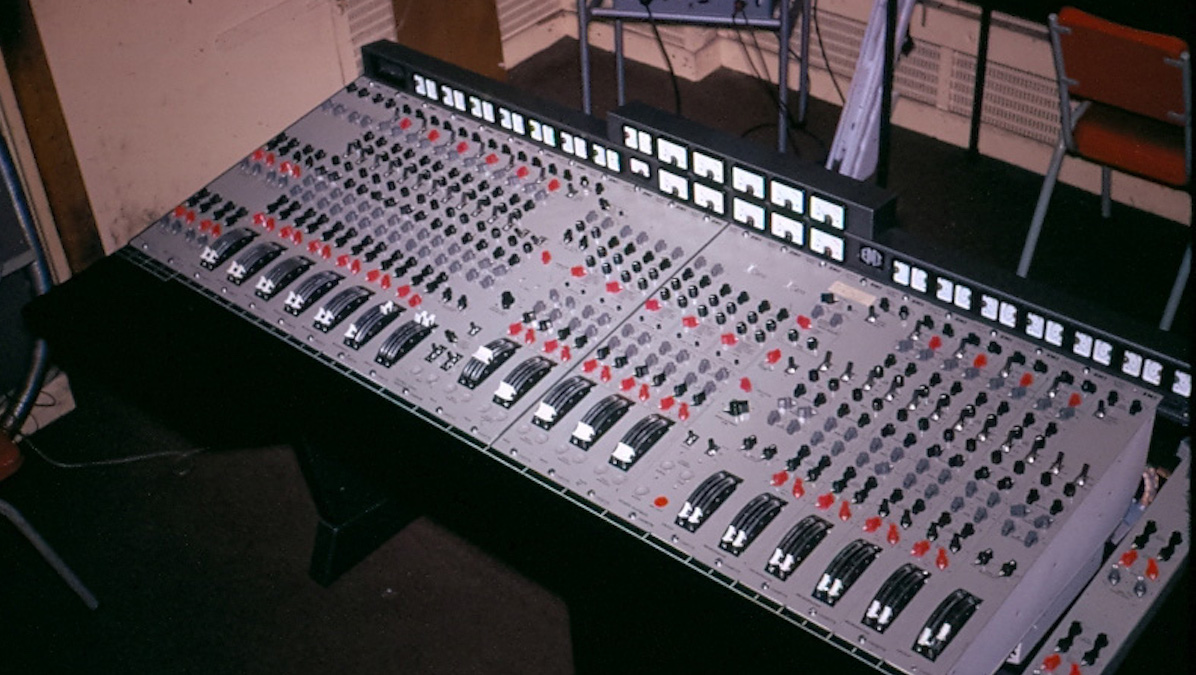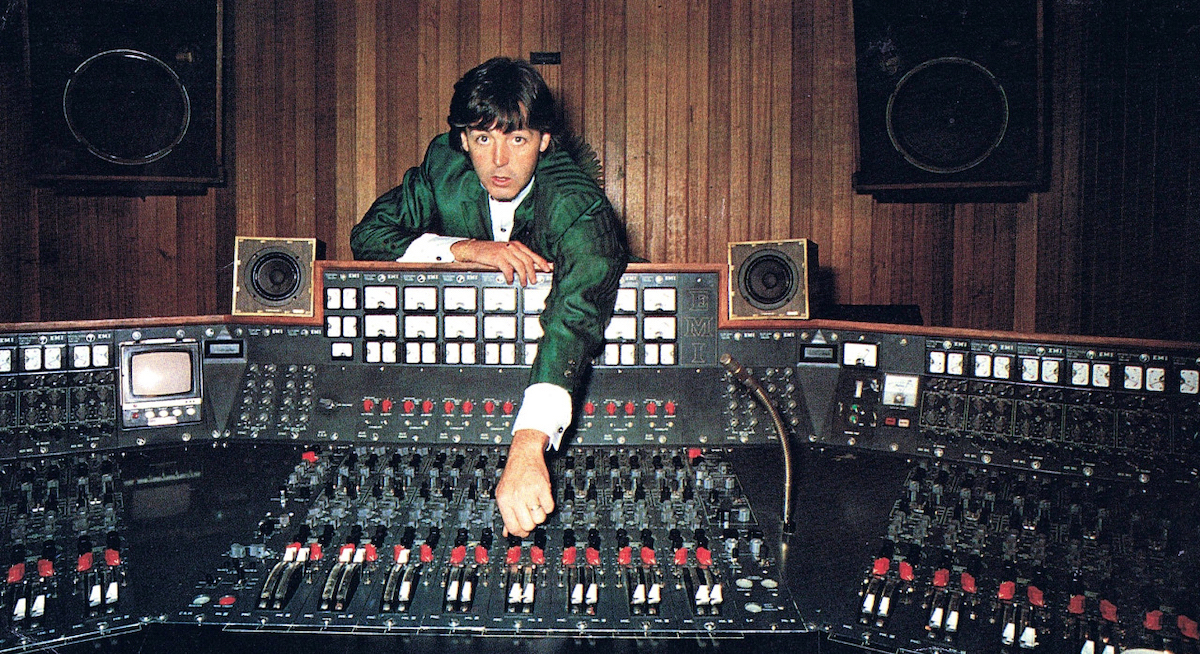"He liked the look of the knobs": The extraordinary story of The Beatles' Abbey Road mixing desk that was rescued from a skip and is now worth over a million pounds
Here comes the seven-figure sum - that's what you might have to pay for the desk that was used to record Fab Four's final album, then given to a school that binned it…

If you fancy owning a piece of Beatles history, then grab your (hopefully very large) jar of spare change and get yourself over to Bonhams in London on 14 December. You could grab yourself an early Christmas present in the form of the EMI TG12345 Mk I desk that used to record the Beatles’ final album Abbey Road. And the story of how it actually survived to this day is quite extraordinary…
The Beatles Abbey Road album was the first to use a Moog synth and an eight-track recorder.
The EMI TG12345 Mk I being auctioned in December was a fixture at Abbey Road studios from 1968 to 1971 and used by the band not only on Abbey Road, but for several of their solo projects after the Fab Four disbanded in 1970.
The Abbey Road album was a milestone recording in many ways, not least because it turned out to be The Beatles' swansong. It was also the first to use a Moog synth and an eight track reel-to-reel recorder, which was one of the reasons that the EMI TG12345 Mk I was used for the recording – it could handle the extra track capacity as it features 24 mic inputs and eight tape outputs.
The result? Classic Beatles tracks such as Here Comes The Sun and Come Together.
The EMI desk is a solid-state transistor-based console - a depature from the earlier tube-based desks that The Beatles used - and also features limiters and compressors on each channel. Indeed, its design is said to have given the Abbey Road production "a smoother more polished sound" compared to previous Beatles recordings, with some noting its warmer low-end and more distinguished higher frequencies.
While not 100% critically acclaimed on release, the Abbey Road album was incredibly successful, selling four million copies within two months, and it currently stands at some 31 million sales.
The album is now highly regarded and its cover so iconic that EMI rebranded its studios into Abbey Road in the 1970s. (And the actual road has become almost impossible to drive down for fear of running over the hundreds of Beatles fans who think that they are the first to try and 'recreate' its image.)
Get the MusicRadar Newsletter
Want all the hottest music and gear news, reviews, deals, features and more, direct to your inbox? Sign up here.

The EMI TG12345 Mk I was built specifically for eight-track recording by Abbey Road's recording engineers and the Central Research Laboratories at the EMI Hayes factories. It was installed in Studio 2 of the then EMI Studios in the summer of 1968 before the Abbey Road sessions started in early 1969.
After the band officially split up in April 1970, the desk was used on the various band member's solo projects. John Lennon's Instant Karma was recorded and mixed on the desk; George Harrison used it for his triple album All Things Must Pass; Paul McCartney for some tracks on his debut his self-titled album; and Ringo Starr for his debut album, Sentimental Journey.

After just a short life at the studio, the desk was dismantled - what were they thinking? - in 1971, with some parts bizarrely given to a local school in North London. They wanted the desk to record seminars but couldn't get it working so dumped the parts in a skip.
"There was all this TG stuff piled up, obsolete, nobody wanted it."
Luckily, these were saved by the school's tape machine maintenance engineer who - get this - "liked the look of the knobs". The engineer, according to Abbey Road, then swapped the parts for an ADAT recorder, unaware of their value.
Meanwhile, other parts of the desk were stored in the attic and garage of Abbey Road studios, where they were found by sound engineer Mike Hedges.
“There was all this TG stuff piled up, obsolete, nobody wanted it. They had all been broken up,” he told The Times. He then bought the parts from the studio and later tried to source other parts for the TG desk after discovering that it had been the console that recorded Abbey Road. However, he lacked the main part that had been donated to the school.

Incredibly, in 2018 Mike was contacted by songwriter Terry Britten, who told him that he had the missing TG which had come into his possession "in a roundabout way" (presumably Britton swapped his ADAT for it).
Hedges has spent the last four years reconstructing the desk and it is now said to be around 70% original and in fully working order.
“It is fantastic to get that thing working again but it has taken me years and cost me dearly,” he told The Times. Of the auction, he added: “If I didn’t sell it I would be bankrupt.”
Bonhams says that "the current owner has painstakingly reunited the surviving original parts and professionally restored the console to its former glory. Having undergone a comprehensive, state-of-the-art restoration process, the console is now back to working order and comprises the majority of original parts from the historic Abbey Road recording sessions.
"This console is an incredibly important piece of Beatles history, and of music history overall – and Bonhams is honoured to bring it to auction."
The auction will also include other Beatles and Abbey Road related items, including a Psychedelic Abbey Road Logo Illuminated Sign, circa 1970 (estimated value: £8,000 - 12,000); two prints of The Beatles on Abbey Road, 1969. (est: £18,000 - £20,000); and (we're bidding for this) an EMT 140 Echo plate reverb owned by John Lennon and used for the recording of Imagine, circa 1970 (estimate: £15,000-20,000).
You can get more information from Bonhams' website.


Andy has been writing about music production and technology for 30 years having started out on Music Technology magazine back in 1992. He has edited the magazines Future Music, Keyboard Review, MusicTech and Computer Music, which he helped launch back in 1998. He owns way too many synthesizers.
“I’m looking forward to breaking it in on stage”: Mustard will be headlining at Coachella tonight with a very exclusive Native Instruments Maschine MK3, and there’s custom yellow Kontrol S49 MIDI keyboard, too
MusicRadar deals of the week: Enjoy a mind-blowing $600 off a full-fat Gibson Les Paul, £500 off Kirk Hammett's Epiphone Greeny, and so much more










